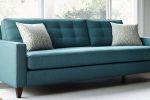Harmonising Sustainability and Aesthetics With Aluminium in Modern Living

When you think of aluminium, your mind might dart to its lustre, its agility in design and yes, its pivotal role in modern sustainability efforts. But what often eludes the casual observer is how intricately aluminium weaves into the fabric of our daily lives, supporting both our environmental ambitions and our aesthetic sensibilities.
From passive windows that shield and insulate to sleek, modernist interior touches that add polish and longevity to our homes, aluminium is the unsung hero of the contemporary domicile.
The Mechanics of Passive Aluminium Windows
Imagine a window that not only offers a view but also works silently to reduce your home’s carbon footprint. Passive windows, particularly those framed with aluminium, are at the forefront of energy-efficient construction.
Aluminium offers high thermal insulation thanks to innovations like thermal breaks and double or triple glazing, which are fundamental to passive house standards. These technologies in aluminium frames keep homes cosy in winter and cool in summer, thereby slashing energy bills and minimising environmental impact.
Design and Installation Considerations
Choosing the right aluminium passive window involves a keen eye for both technical specs and visual appeal. Crucial factors like the window’s U-factor, which measures heat loss, and the SHGC (Solar Heat Gain Coefficient), which gauges solar radiation admitted through the window, play a massive role in performance.
Industry providers employ expert knowledge in delivering products that meet these specific requirements without compromising on design, ensuring a perfect blend of form and function in the architectural masterpieces they grace.
Case Studies of Passive Window Success
Across the globe, stories abound of sustainable building projects that have leveraged the power of aluminium passive windows.
From minimalist homes that bask in the natural light without heating up like a greenhouse to grand public edifices that have cut their energy usage dramatically, these examples underline the transformational ability of aluminium to marry passive energy principles with show-stopping designs.
Aluminium’s Versatility in Interior Applications
The narrative of aluminium’s contribution extends within the walls of our abodes as well. It’s a material celebrated not just for its durability and strength but for its sheer range of applications — from avant-garde aluminium furniture pieces and stair balusters to trimmings that frame walls and ceilings with a fine silver line.
The adoption of aluminium in interior design is a testament to its versatility, and it speaks to a future-forward approach to crafting spaces that are both artistically pleasing and functionally robust.
Trends in Aluminium Accents and Features
Capturing the zeitgeist of interior design, aluminium finds itself at the forefront of trendsetting finishes and features. The current move toward minimalist, industrial aesthetics has seen a surge in the use of raw and anodised aluminium, enhancing textures and tones that light up an interior.
Paired with its unparalleled adaptability — able to be cast or bent into practically any shape — aluminium’s role in the home becomes a statement of modern living, embodying a chic, urban edge that’s hard to rival.
Aluminium’s Role in Eco-Friendly Construction Practices
Aluminium’s influence on green building initiatives is well-established. It’s a recyclable powerhouse, where nothing is wasted. The energy required to recycle it is a mere fraction of that needed for its initial production, creating a loop of sustainability that feeds back into itself.
With a focus on reducing environmental degradation, aluminium steps into the limelight, aligning construction practices with ecological responsibility. It’s no wonder that aluminium is the go-to for structures aimed at minimal environmental footprint, solidifying its standing as a beacon of eco-progressive construction materials.
Integration of Aluminium With Renewable Energy Systems
Perhaps one of aluminium’s most compelling attributes is how it complements renewable energy systems, such as solar panels. Its lightness and resilience make it an ideal candidate for frameworks and mounts that carry the weight of our clean energy aspirations.
By embracing a material that works hand-in-hand with technology harnessing the sun’s boundless power, we give credence to aluminium’s role as a facilitator of a greener future, where buildings aren’t just constructed but thoughtfully composed with sustainability at their core.









